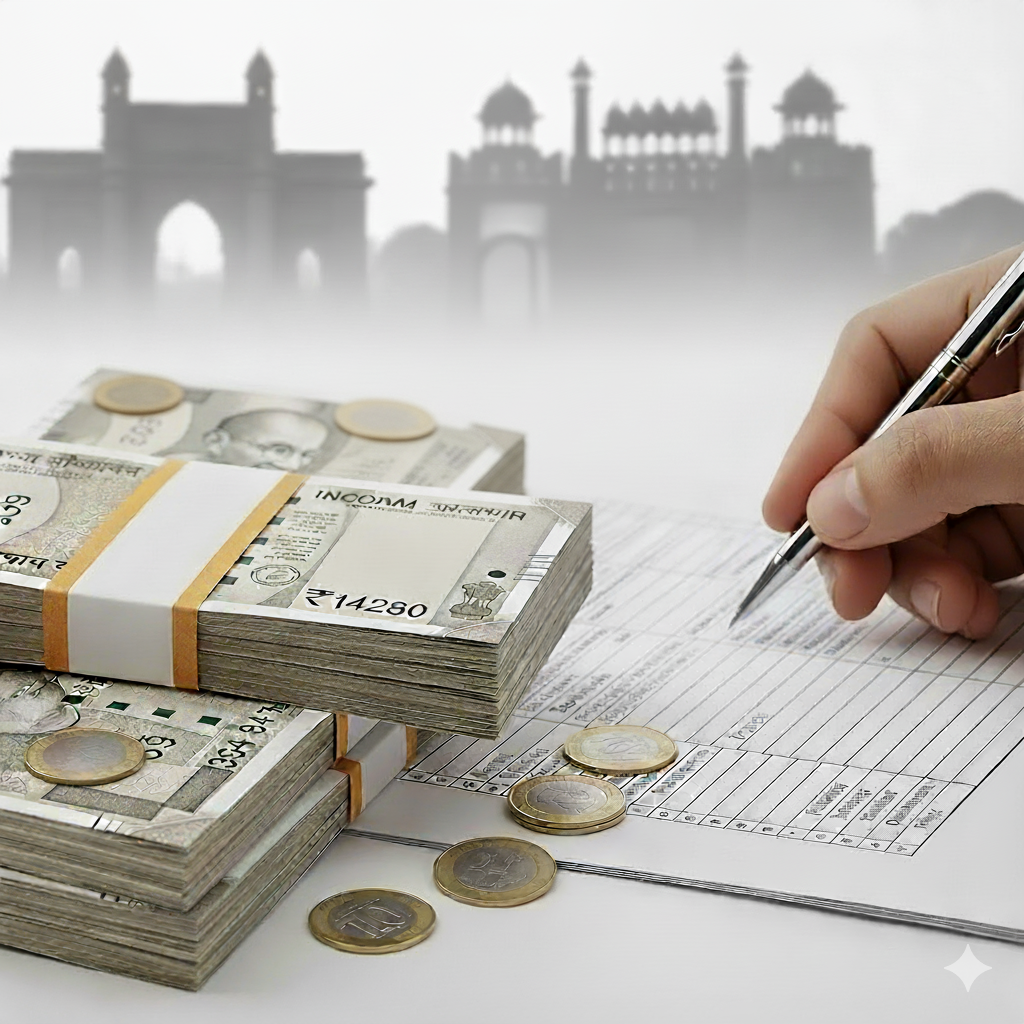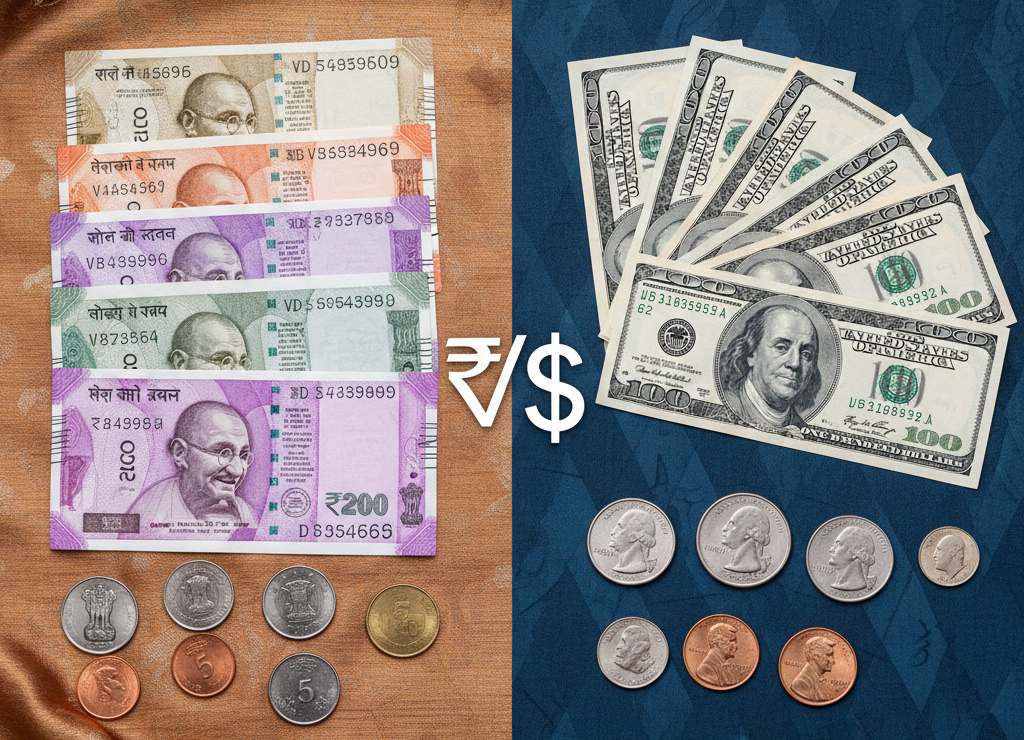India’s direct tax framework is witnessing a significant shift. In August 2025, the Income-tax Act, 2025 received Presidential approval, replacing the long-standing Income Tax Act, 1961. Although its provisions will take effect from 1 April 2026, this development marks the beginning of a new phase in taxation, focused on simplification, transparency, and minimizing disputes.
At the same time, many taxpayers often ask: Is there a prescribed limit on keeping cash at home? While no law sets a specific ceiling on cash holdings, several rules govern cash transactions, mandatory disclosures, and penalties for violations.
In this blog, we look at India’s income tax system in 2025—its main roles, the key changes under the new Income Tax Act, 2025, and what it means for taxpayers. We also explain the rules and risks around keeping cash at home, along with practical tips to stay compliant.
Role of Income Tax in India
Core Objectives
- Helps the government raise revenue to fund public services and welfare programs.
- Promotes fairness by ensuring higher earners pay more tax, reducing income inequality.
- Discourages tax evasion through audits, investigations, and search operations.
- Supports economic growth by offering tax breaks and incentives for savings, investments, and key sectors like green energy and affordable housing.
- Simplifies compliance to make tax filing easier, reduce disputes, and encourage voluntary payment.
Institutional Structure & Powers
The Central Board of Direct Taxes (CBDT) under the Ministry of Finance manages direct taxes, including income tax. The Income Tax Department is responsible for tasks such as assessments, refunds, enforcement, and investigations. Senior officials like Chief Commissioners, Commissioners, and Directors supervise tax collection and ensure policies are carried out. Special teams, like the Air Intelligence Unit, keep track of money movement at airports to curb tax evasion. Recent reforms emphasize faceless assessments and digital processes to enhance transparency and reduce personal interactions. For disputes, there are appellate tribunals and courts, along with systems like the National Judicial Reference System to make legal matters more efficient.
Working Mechanism of Income Tax in India
1. Income Assessment – Taxpayers calculate their income under five categories: Salary, House Property, Business/Profession, Capital Gains, and Other Sources.
2. Tax Filing – Individuals and businesses must file their Income Tax Returns (ITRs) every year, typically by July 31 for individuals.
3. TDS & Advance Tax – Taxes are collected in advance through Tax Deducted at Source (TDS), Tax Collected at Source (TCS), and advance tax payments.
4. Scrutiny and Assessment – The tax department reviews returns, and any discrepancies may trigger notices or audits.
5. Enforcement Measures – If income is concealed, the Income Tax Department can levy penalties, conduct searches, or take legal action.
Responsibility of the Income Tax Department of India
1. Tax Collection – The department is responsible for collecting direct taxes such as income tax, corporate tax, and wealth tax (where applicable).
2. Law Enforcement – It ensures the provisions of the Income Tax Act, 1961, are properly implemented.
3. Curbing Tax Evasion – Through audits, assessments, and raids, it works to prevent tax evasion and reduce black money.
4. PAN & TAN Services – It issues Permanent Account Numbers (PAN) and Tax Deduction Account Numbers (TAN) for taxpayer identification.
5. Refund Management – Tax refunds are processed and credited directly to eligible taxpayers’ bank accounts.
6. Dispute Resolution – The department manages litigation and represents the government in tax-related appeals before tribunals and courts.
Highlights of the Income Tax Act, 2025 (compared to the 1961 law)
The Income Tax Act, 1961 (with many amendments) continues to apply for now, but the Income Tax Act, 2025, will set the framework for the future. Below are its key highlights and changes:
1. Effective date & structure
- The new Act will come into force from 1 April 2026, covering the tax year beginning April 2026.
- It simplifies the law, cutting down from more than 800 pages in the old Act to 536 sections, 23 chapters, and 16 schedules.
- Introduces a “Tax Year” system (12 months starting April), replacing the earlier Financial Year–Assessment Year format.
2. Major policy changes & simplifications
- Encouraging voluntary compliance: Ambiguities are clarified, outdated provisions removed, and litigation is expected to reduce.
- Revised slabs, rebates & deductions:
- Full rebate for incomes up to ₹12 lakh under the new tax regime.
- Introduction of a 25% slab for income between ₹20–24 lakh (as per draft).
- Standard deduction raised (from ₹50,000 to ₹75,000 in draft).
- Multiple presumptive taxation schemes to be consolidated for better clarity.
- Stronger digital & inspection powers: Expanded scope for monitoring virtual assets, searches, and data collection—though this has sparked privacy concerns.
- Cross-border taxation clarity: Terms like business connection and associated enterprises updated to fit digital and global business models.
- Continuity with modernization: While the law is reorganized, fundamental principles like residence rules, scope of income, and charging provisions remain intact.
- Smooth transition support: FAQs and mapping tools have been released to help taxpayers shift from the old to the new Act.
How much cash can you keep at home, as per the IT Department?
The Income Tax Act (Sections 68 to 69B) deals with rules on cash and property:
- Section 68: If cash is shown in your accounts but the source is not explained, it is treated as unexplained income.
- Section 69: If you hold cash or investments and cannot prove where they came from, they are considered undisclosed income.
- Section 69B: If your assets or cash are more than what you have declared, and you cannot justify the excess, tax and penalties will apply.
Penalties
If you cannot provide valid proof of the source of your cash, the Income Tax Department can treat it as undisclosed income. Such income is heavily taxed at 78% under Section 115BBE of the Income Tax Act, 1961. This 78% rate comes from a 60% flat tax, a 25% surcharge on that tax, and an additional 4% health and education cess.
What happens if you can’t justify your cash at home?
If the Income Tax Department finds that you cannot clearly explain the source of large cash holdings during a scrutiny, the following can happen:
- The cash may be treated as undisclosed income and taxed accordingly.
- The Income Tax Department could impose heavy penalties, sometimes equal to or even more than the amount in question.
- The Income Tax Department may take legal actions, including issuing notices, conducting surveys, or carrying out search and seizure operations.
To avoid these issues, it is crucial to maintain proper documentation, such as withdrawal slips, bank statements, audit trails, and ensure that the cash aligns with your declared income.
FAQs
Q1: What is the purpose of income tax in India?
Ans: Income tax is the amount individuals and businesses pay on their earnings each financial year, which helps fund important public services. The Income Tax Act, 1961 governs it in India.
Q2. What are the seven key principles of taxation?
A: The seven main principles of taxation are equity, certainty, convenience, economy, simplicity, flexibility, and diversity. They ensure that a tax system is fair, predictable, easy to follow, cost-effective, and adaptable to changing economic conditions.
Q3. Who is responsible for income tax in India?
Ans. The finance ministry has given the task of administration of direct taxes, like Income Tax, etc., to the Central Board of Direct Taxes (CBDT).
Q4. Which tax contributes the most revenue in India?
Ans: Corporate tax is the biggest source of revenue for the Indian government.








